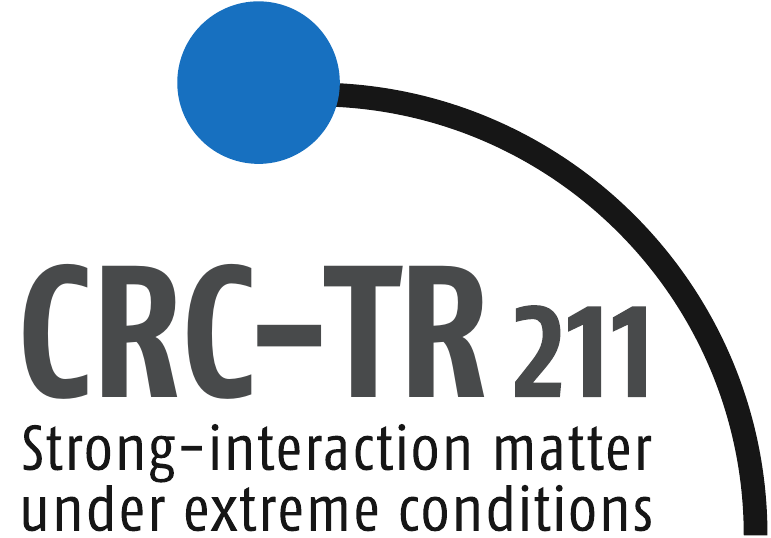\( \newcommand{\dd}{\mathrm{d}} \) \(
\DeclareMathOperator{\sign}{sign} \) \(
\newcommand{\pvec}[1]{\vec{#1}^{\,\prime}} \) \(
\newcommand{\R}{\mathbb{R}} \)
\( \newcommand{\dd}{\mathrm{d}} \) \(
\DeclareMathOperator{\sign}{sign} \)

 Nuclear Physics Seminar
Nuclear Physics Seminar
Venue: Physics Building, Max-von-Laue-Str. 1, PHYS 02.116
Time: Thursday, June 27, 4:30pm (s.t.)
Contact: hees@itp.uni-frankfurt.de
Common femtoscopic hadron-emission source in pp collisions at the LHC
Maximilian Korwieser — Technical University of Munich
The ALICE Collaboration recently
published a plethora of results on the interaction between many exotic
combinations of particles, most notably $\text{p}$-$\Omega$, obtained
from femtoscopic measurements in pp collisions at the LHC. Previous
studies of the source in pp collisions at $\sqrt{s}=13 \;
\text{TeV}$ have been performed by analysing p-p and p-$\Lambda$
correlations. The source was constructed using a Gaussian core for the
primordial particles and introducing exponential deformations due to the
decay of short-lived strongly decaying resonances. The conclusion was
that the primordial sources for baryons share a common transverse mass
($m_{\text{T}}$) scaling. The topic of this seminar is to discuss
recent developments and efforts supporting the case that indeed
all hadrons share a common primordial source. The main focus will lie on
the femtoscopy of mesons which were shown to exhibit the same
$m_{\text{T}}$ scaling, for example same charge $\pi$-$\pi$ (and
$\text{K}^+$-p). These systems are especially crucial to understand the
source, as by far the largest contribution from resonances is expected.
A differential study of the spatial extension of the source function as
a function of $m_{\text{T}}$ and multiplicity is presented. The results
are based on minimum-bias and high-multiplicity pp collisions at
$\sqrt{s}=13\;\text{TeV}$ recorded with the ALICE detector. Finally, the
impact of these findings is discussed in the broader context of
femtoscopic measurements and coalesence models.
The colloquium will be streamed but not recorded.
Zoom link: https://uni-frankfurt.zoom.us/j/2848286010?pwd=VmtCY1RCc1hpVStKd0RibFBpc1IzZz09
Meeting ID: 284 828 6010
Password: 068695
Nuclear Physics Colloquium Homepage
 Nuclear Physics Seminar
Nuclear Physics Seminar
 Nuclear Physics Seminar
Nuclear Physics Seminar